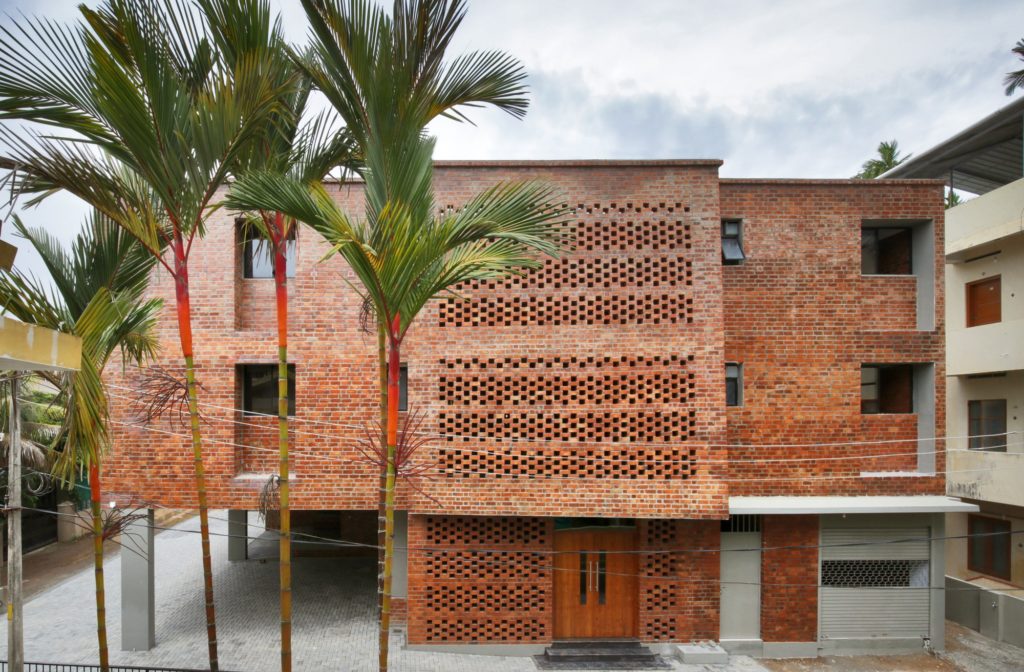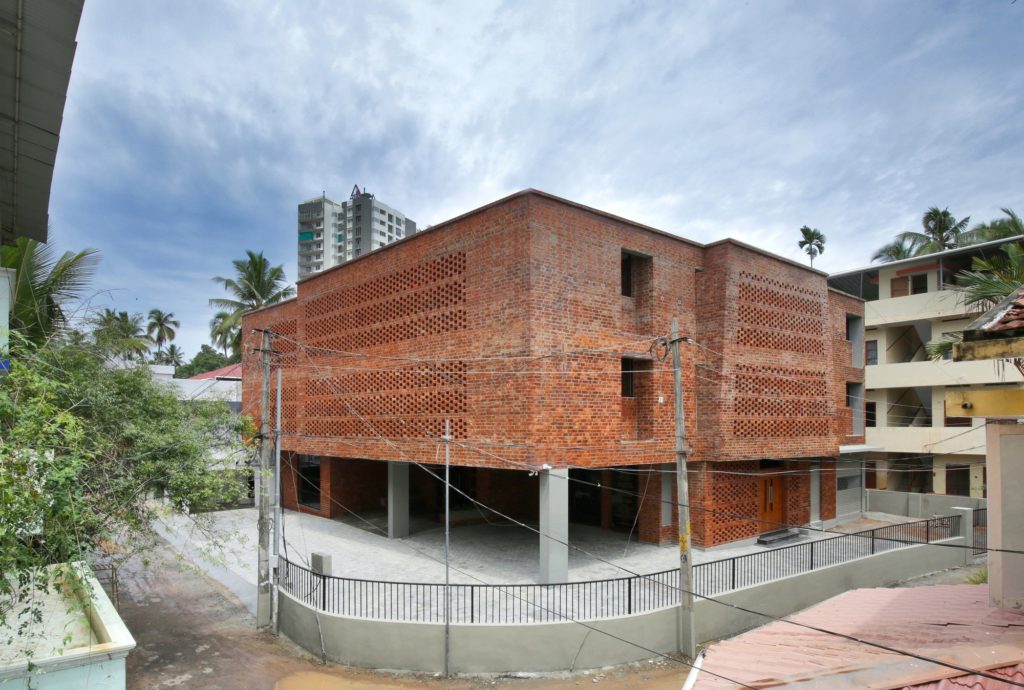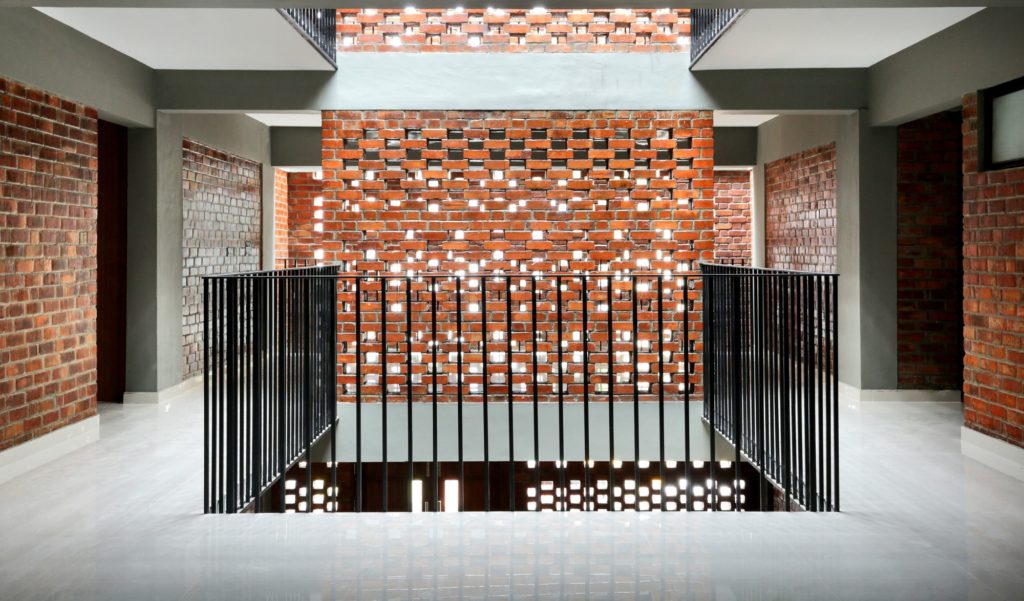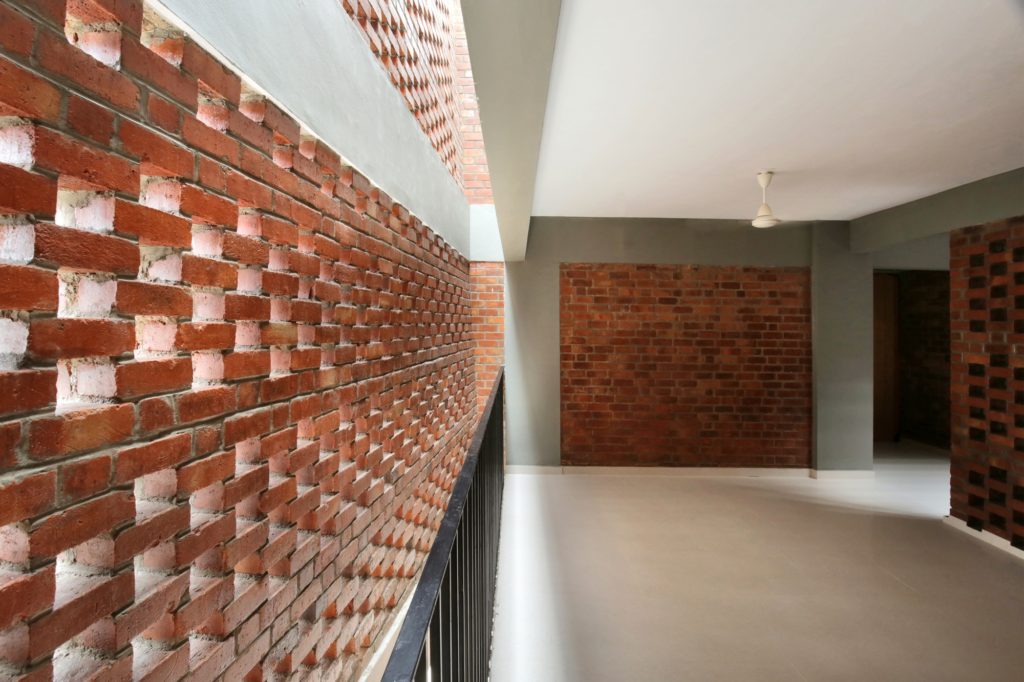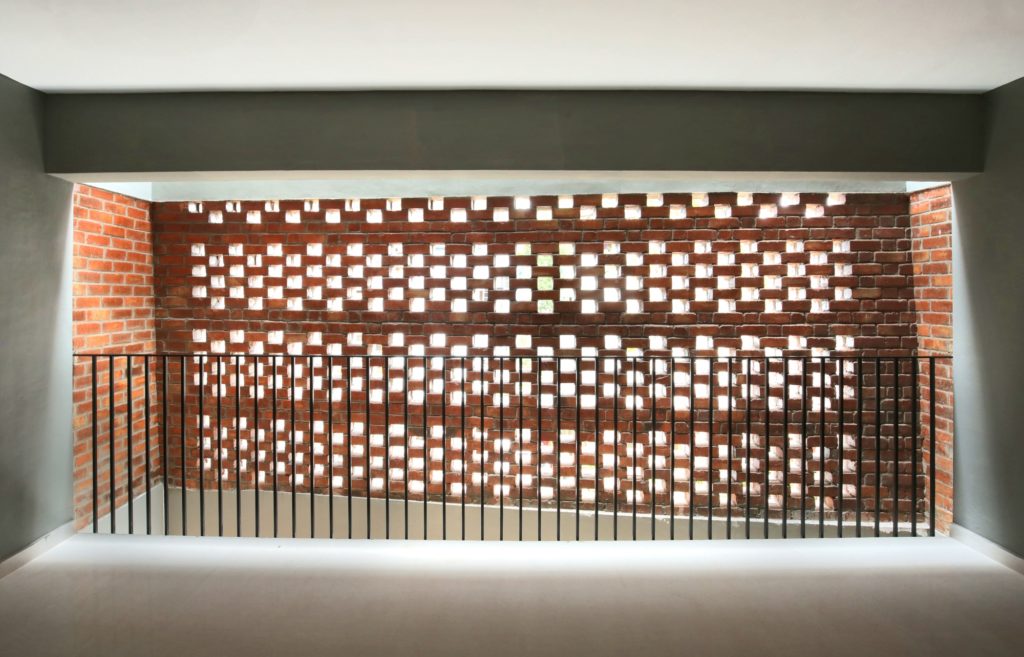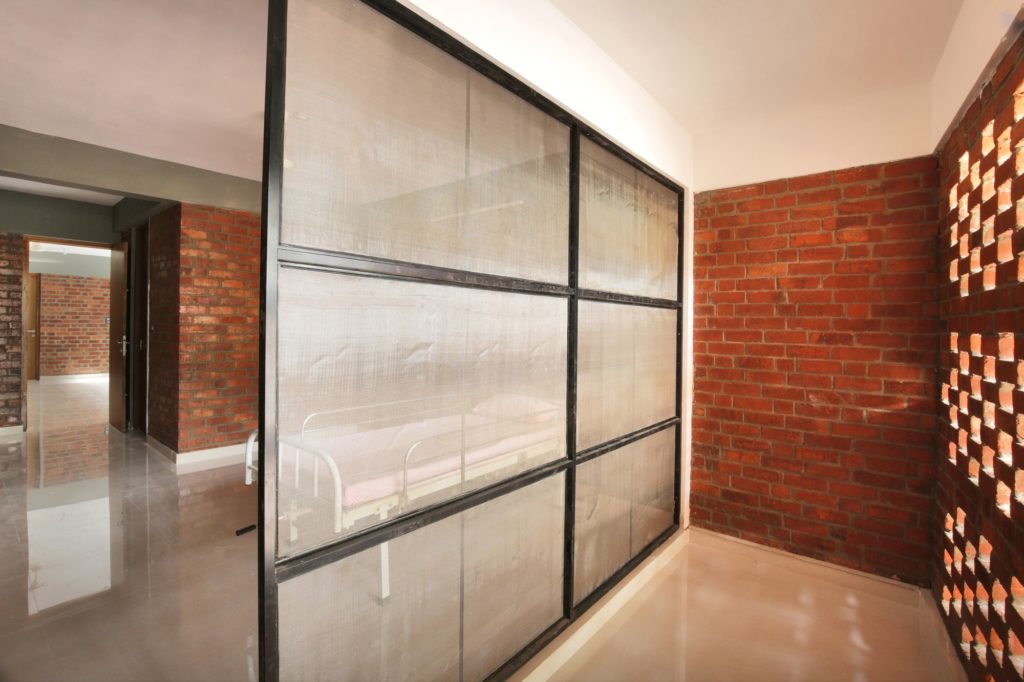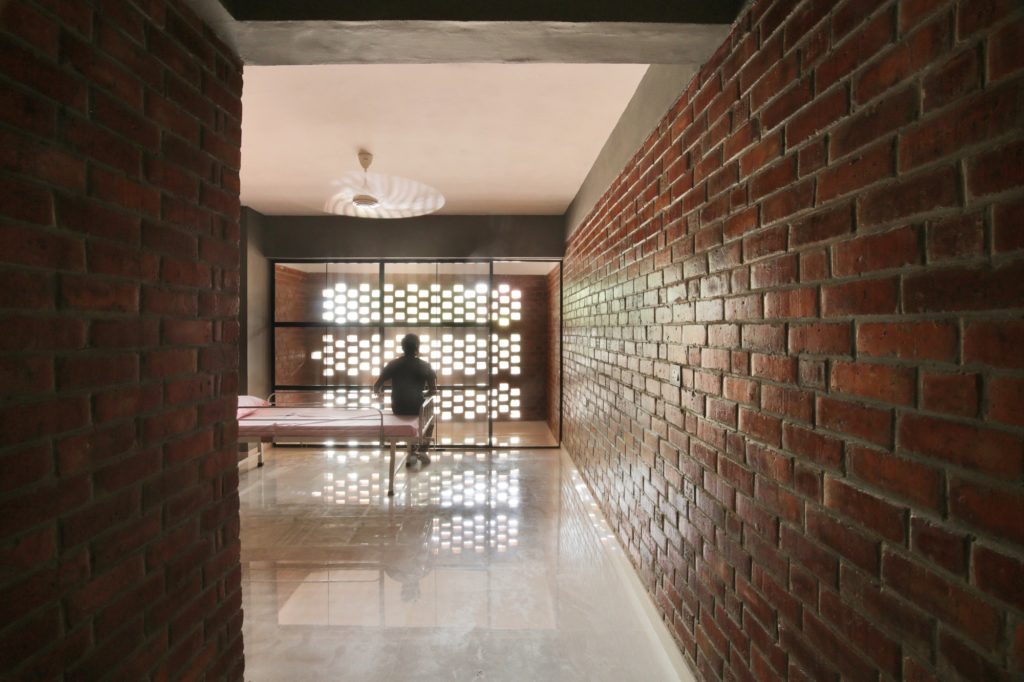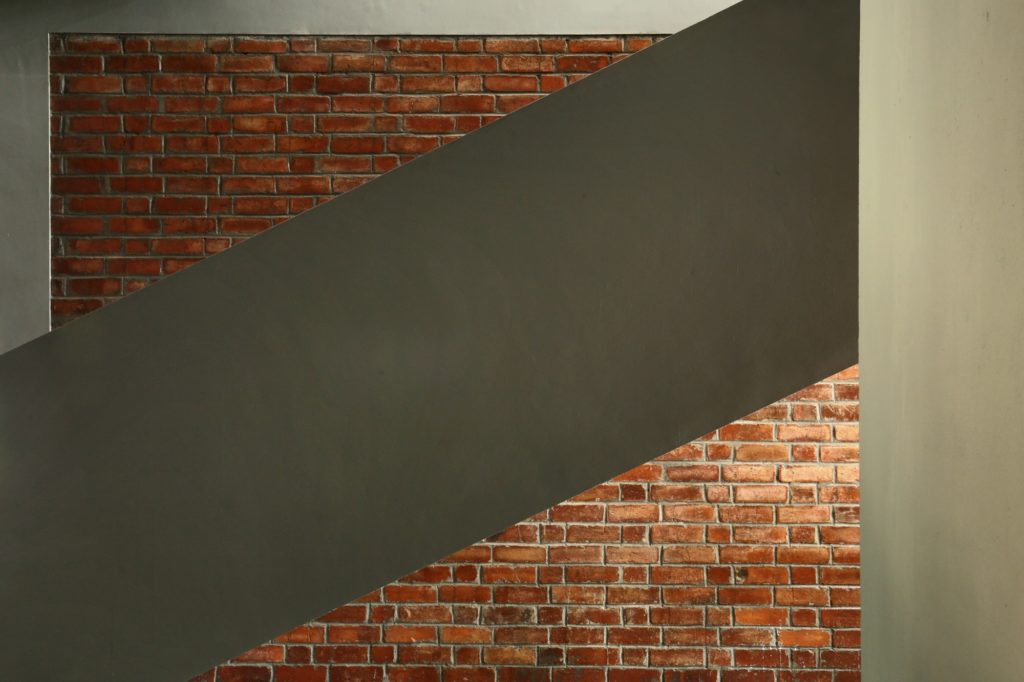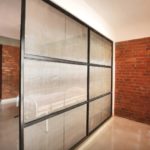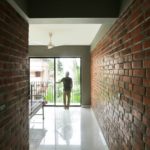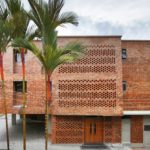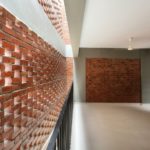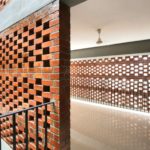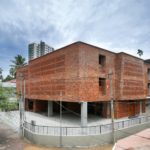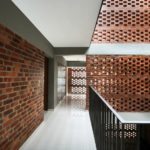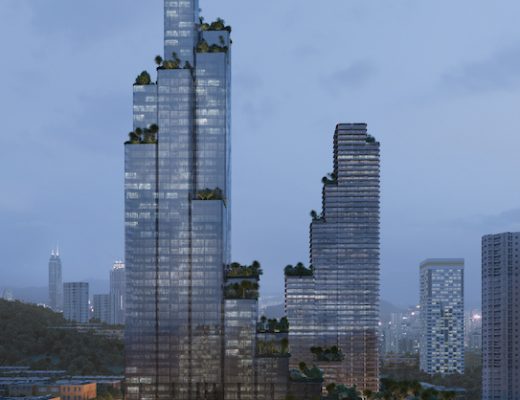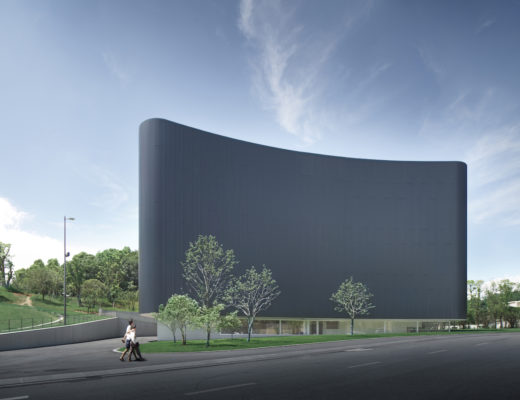Srijit Srinivas Architects has designed a hospice project in the southern Indian city of Thiruvananthapuram which provides free accommodation for cancer patients visiting locals hospitals.
Commissioned by The Malabar Province of the Order of Discalced Carmelite (OCD) – affiliated to the local Catholic Church – Benziger Hospice Home project was designed by Srijit Srinivas along with his team comprising Remya Raveendran, Viji B., Sriya, and Deepika. The 1,636m² project’s original brief was for five floors, which was eventually reduced to three stories encompassing 26 patient suites during project development.
One of the main challenges for the team was the odd shape of the site – with a square front portion markedly tapering to the rear with an offshoot to the left housing an existing building earmarked for future demolition. The design remit was to deliver a place of temporary stay for cancer patients which sensitively addresses their special needs and emotional vulnerabilities. The location in a crowded semi-urban setting called for adequate privacy measures to screen neighbouring residents’ views.
Other considerations included an ambulance entry from the front main gate leading up to the entry ramp, which was girded by a veranda with inbuilt brick seating integrated with trough planters containing high oxygenating plants. The service gate to the northern side allows the supply path to the kitchen plus maintenance access to the plant room.
The ground floor lobby opens to an enclosed northerly landscaped area for patients’relaxation. The lobby with its cool, soothing micro-climate created by its landscaped central courtyard – replete with brick seating and louvered screen walls permitting horizontal and vertical cross ventilation – also facilitates visual lines of sight across the cross-sections of two floors above along with establishing emotional connectivity for the residents.
The natural texture and colour of brick, enhanced by the deliberate proportioning of spaces, and accentuated by the interplay of light and shadows (through brick louvers), endows the lobby area with a sense of warmth and calmness, which is simultaneously welcoming and cathartic for patients. The nurse’s station and director’s office are located adjacent to the lobby. The stairs and lift location allows for easy visibility and quick access to the residents’ suites.
The ground floor has a central dining space opening out to an external landscaped area, and serviced by a large commercial kitchen. Additional kitchenettes and tea stations are also located on individual floors. Overall, the architectural detailing was kept restrained and simple to keep the space calm. The patient care suites are all located on the first and second floors with each room having space for one patient along with either one or two carers. Suites fronting the site’s main entry have balconies with brickwork louvers allowing cool breeze while maintaining privacy for the residents.
A common congregation space has been provided on every floor, along with an activity room and a recreation-cum-TV room. The built form is contained within a simple geometry aiming to be pared down without the distracting clutter of accouterments. The external façade utilises a double-slanted louvered brickwork feature wall covering the recreation rooms across two floors and cantilevering over the ground floor while showcasing the architectural possibilities of the humble building material – brick.
See the full image gallery here:
Photos: Prasanth Mohan, Running Studios
You might also like:
Sustainable house by Wallmakers in southern India mimics remote Himalayan cabin
Compact house in South India by Ego Design Studio tackles hot tropical climate with local materials
Srijit Srinivas Architects designs a sustainable multifunctional house in India using bricks


